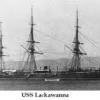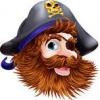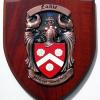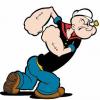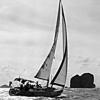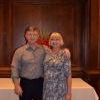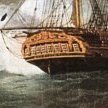MORE HANDBOOKS ARE ON THEIR WAY! We will let you know when they get here.
×
-
Posts
2,396 -
Joined
-
Last visited
Reputation Activity
-
 usedtosail reacted to Jparsley in USS Constitution by usedtosail - FINISHED - Model Shipways - scale 1/76
usedtosail reacted to Jparsley in USS Constitution by usedtosail - FINISHED - Model Shipways - scale 1/76
Looking good my friend Have a great weekend and congrats to your daughter
-
 usedtosail got a reaction from Canute in drilling without drill press
usedtosail got a reaction from Canute in drilling without drill press
Lionfish,
I had these descriptions in my notes. I am pretty sure they came from posts in MSW 1.0, so if the authors recognize their writing, please acknowledge.
Good luck
Drilling Mast Holes
Cut a block of wood for each mast, and hold them up to the plans aligned with the deck at the mast hole. Mark the locations of the sides of the mast on the top and bottom of the block, then connect these marks to show the mast angle on the sides of the block. Mark the center holes of the masts from the deck plans, then place each block on the deck next to these marks. Use the hand drill to drill small holes for each mast, using the lines on the blocks to hold the drill at the correct angle. Also make sure the drill is aligned port and starboard. Use bigger bits up to 3/16” for each hole. Don’t drill hole same diameter as mast. Drill smaller hole and add tenet to bottom of mast, so mast will hide holes edges.
Drilling Mast Holes 2
Actually, you'll find that accuracy of only a couple of degrees is nowhere near enough. Any inacuracy will be greatly magnified by the length of the mast and you'll realise that 1 degree at the deck will mean a deviation of several cm at the tip.
Start by making a little jig out of a scrap of timber about half to 3/4 inches wide by an inch high and and half an inch thick. Shape it by hand so it sits on the deck at the mast hole squarely, and cut then file an angle on it, that matches the rake. You need to end up with a block you can sit before or aft of the hole with a face layed back at the correct angle, so that a line drawn down the centre of this face would actually be the imaginary line in the centre of the mast. You can fix the jig to the deck with double sided tape, as it will guide your drill, not support it.
Then, line the block with it's marked line up appropriately and using a scribe or pin awl, run it down the line in your jig and push it into the deck, making a good deep hole. This will give you a start for your drill in the correct place at the correct angle. You might not think the angle of an awl hole could make any difference, but believe me it does, since if the angle isn't correct a drill presented into the start you've made will move out of location as it turns.
Now using a drill bit somewhere between small and tinsy winsy, in a pin vice or other hand tool that can grip your bit, run it down the line on your jig and hand drill the first very very small hole. Just watch the drill tip as it starts, to make sure it follows the awl hole, then concentrate on the line on your jig, keeping the bit perfectly in line and touching the jig all the time. This will give you a perfect guide hole, which is invaluable.
Now step up in drill size. I can't tell you what sizes to use, but if you need say, a 6mm hole, you want to do it in no less than 4 steps. The second step should be no more than a 1mm drill. You'll have to move your jig back now, or it'll push the drill off line, but you don't need to lean on it, just use it as an eye guide. Follow this for all the steps you need until you get to the final hole size and your hole should be perfectly angled.
It is important to note, that twist drills (the ones that everybody thinks of when you say drill, that have a screw all the way along the shank), are designed and angle sharpened for metal, not wood. These DO NOT drill an accurate sized hole in timber, since the timber is constantly cut by the side flutes while the drill is cutting its way through the wood. Spade bits are accurate for timber, but far too dangerous to your model, since one slip up and they can rip it to pieces. The solution is to use a normal twist drill bit, that is smaller by about 0.2 to 0.4 than the finished hole you need. If you need say, a 6mm hole, you will finish with a 5.8mm fractional drill, otherwise your hole will be too big.
You will need to run the larger drills in a power tool, unless you have enough hands to use a good hand drill. You must make sure that you DO NOT let the weight of the drill rest against the low side of the angled hole as you're drilling, though this is the natural thing to do. If you do, you will get an oval hole and there's nothing you can do to fix it, so make sure you are fully supporting the drill with your own muscle.
Multiple sized drills is how I do it too with my last largest drill bit running in reverse that way it never shews up any planking, old woodworking trick.
This may seem a little tedious, but accurately drilling small holes in soft wood is suprisingly tricky and this method is sure fire. When you think about it, most times you drill wood, near enough will do, but not on a scale model.
There is a high tech and fairly cheap way to know at what angle your hand drill is at, and more importantly what angle the masts will be at. Drilling a perfect hole is not the end all, there will almost always be some play even in a perfect drill. If you drill a slightly larger hole you can buy a set of mast coats which should actually be part of the kit anyway.
The high tech tool is a laser. One like the Craftsmen version that shoots a long line. Model Expo also sells a protractor that will make things a bit easier. It has an armature you can set exact to the plans. Make certain the model is level, the laser is level. Set the protractor where the ship will be and the laser to the angle of the setting on the protractor, then slide the ship in place where the protractor was and you've a line to keep the drill in or set the mast to later.
The laser has more applications with these models. Yards, center lines down the decks, even a waterline. I got mine as a Father's day gift last year, I've used it on model ships and not a thing else. Today there are a number of cheaper versions of the Craftsmen laser line but be sure you can manipulate the line between vertical and horizontal and you've got what you need.
-
 usedtosail got a reaction from Brian the extraordinaire in drilling without drill press
usedtosail got a reaction from Brian the extraordinaire in drilling without drill press
Lionfish,
I had these descriptions in my notes. I am pretty sure they came from posts in MSW 1.0, so if the authors recognize their writing, please acknowledge.
Good luck
Drilling Mast Holes
Cut a block of wood for each mast, and hold them up to the plans aligned with the deck at the mast hole. Mark the locations of the sides of the mast on the top and bottom of the block, then connect these marks to show the mast angle on the sides of the block. Mark the center holes of the masts from the deck plans, then place each block on the deck next to these marks. Use the hand drill to drill small holes for each mast, using the lines on the blocks to hold the drill at the correct angle. Also make sure the drill is aligned port and starboard. Use bigger bits up to 3/16” for each hole. Don’t drill hole same diameter as mast. Drill smaller hole and add tenet to bottom of mast, so mast will hide holes edges.
Drilling Mast Holes 2
Actually, you'll find that accuracy of only a couple of degrees is nowhere near enough. Any inacuracy will be greatly magnified by the length of the mast and you'll realise that 1 degree at the deck will mean a deviation of several cm at the tip.
Start by making a little jig out of a scrap of timber about half to 3/4 inches wide by an inch high and and half an inch thick. Shape it by hand so it sits on the deck at the mast hole squarely, and cut then file an angle on it, that matches the rake. You need to end up with a block you can sit before or aft of the hole with a face layed back at the correct angle, so that a line drawn down the centre of this face would actually be the imaginary line in the centre of the mast. You can fix the jig to the deck with double sided tape, as it will guide your drill, not support it.
Then, line the block with it's marked line up appropriately and using a scribe or pin awl, run it down the line in your jig and push it into the deck, making a good deep hole. This will give you a start for your drill in the correct place at the correct angle. You might not think the angle of an awl hole could make any difference, but believe me it does, since if the angle isn't correct a drill presented into the start you've made will move out of location as it turns.
Now using a drill bit somewhere between small and tinsy winsy, in a pin vice or other hand tool that can grip your bit, run it down the line on your jig and hand drill the first very very small hole. Just watch the drill tip as it starts, to make sure it follows the awl hole, then concentrate on the line on your jig, keeping the bit perfectly in line and touching the jig all the time. This will give you a perfect guide hole, which is invaluable.
Now step up in drill size. I can't tell you what sizes to use, but if you need say, a 6mm hole, you want to do it in no less than 4 steps. The second step should be no more than a 1mm drill. You'll have to move your jig back now, or it'll push the drill off line, but you don't need to lean on it, just use it as an eye guide. Follow this for all the steps you need until you get to the final hole size and your hole should be perfectly angled.
It is important to note, that twist drills (the ones that everybody thinks of when you say drill, that have a screw all the way along the shank), are designed and angle sharpened for metal, not wood. These DO NOT drill an accurate sized hole in timber, since the timber is constantly cut by the side flutes while the drill is cutting its way through the wood. Spade bits are accurate for timber, but far too dangerous to your model, since one slip up and they can rip it to pieces. The solution is to use a normal twist drill bit, that is smaller by about 0.2 to 0.4 than the finished hole you need. If you need say, a 6mm hole, you will finish with a 5.8mm fractional drill, otherwise your hole will be too big.
You will need to run the larger drills in a power tool, unless you have enough hands to use a good hand drill. You must make sure that you DO NOT let the weight of the drill rest against the low side of the angled hole as you're drilling, though this is the natural thing to do. If you do, you will get an oval hole and there's nothing you can do to fix it, so make sure you are fully supporting the drill with your own muscle.
Multiple sized drills is how I do it too with my last largest drill bit running in reverse that way it never shews up any planking, old woodworking trick.
This may seem a little tedious, but accurately drilling small holes in soft wood is suprisingly tricky and this method is sure fire. When you think about it, most times you drill wood, near enough will do, but not on a scale model.
There is a high tech and fairly cheap way to know at what angle your hand drill is at, and more importantly what angle the masts will be at. Drilling a perfect hole is not the end all, there will almost always be some play even in a perfect drill. If you drill a slightly larger hole you can buy a set of mast coats which should actually be part of the kit anyway.
The high tech tool is a laser. One like the Craftsmen version that shoots a long line. Model Expo also sells a protractor that will make things a bit easier. It has an armature you can set exact to the plans. Make certain the model is level, the laser is level. Set the protractor where the ship will be and the laser to the angle of the setting on the protractor, then slide the ship in place where the protractor was and you've a line to keep the drill in or set the mast to later.
The laser has more applications with these models. Yards, center lines down the decks, even a waterline. I got mine as a Father's day gift last year, I've used it on model ships and not a thing else. Today there are a number of cheaper versions of the Craftsmen laser line but be sure you can manipulate the line between vertical and horizontal and you've got what you need.
-
 usedtosail got a reaction from Jack12477 in USS Constitution by xken - Model Shipways - Scale 1:76.8
usedtosail got a reaction from Jack12477 in USS Constitution by xken - Model Shipways - Scale 1:76.8
I also am interested in following along. I like the way you made your boats and will be using some of your hints when I get to mine.
-
 usedtosail got a reaction from mtaylor in USS Constitution by xken - Model Shipways - Scale 1:76.8
usedtosail got a reaction from mtaylor in USS Constitution by xken - Model Shipways - Scale 1:76.8
I also am interested in following along. I like the way you made your boats and will be using some of your hints when I get to mine.
-
 usedtosail got a reaction from CaptainSteve in USS Constitution by xken - Model Shipways - Scale 1:76.8
usedtosail got a reaction from CaptainSteve in USS Constitution by xken - Model Shipways - Scale 1:76.8
I also am interested in following along. I like the way you made your boats and will be using some of your hints when I get to mine.
-
 usedtosail got a reaction from GLakie in USS Constitution by xken - Model Shipways - Scale 1:76.8
usedtosail got a reaction from GLakie in USS Constitution by xken - Model Shipways - Scale 1:76.8
I also am interested in following along. I like the way you made your boats and will be using some of your hints when I get to mine.
-
 usedtosail reacted to xken in USS Constitution by xken - Model Shipways - Scale 1:76.8
usedtosail reacted to xken in USS Constitution by xken - Model Shipways - Scale 1:76.8
I am off and running to continue my education of model ship building and hopefully on this one I will add sails. Like my Niagara build I will start with the small boats which are mini model kits in themselves and that my two young granddaughters like looking at the "baby boats". They are 2 and 4 years old.
I will skip the presentation of the box and contents since others have done it so well. I am starting with the pinnace the larger of the four. I started by marking the top surfaces of the laser cut parts before removing them from their parent sheet. The reason is that the laser cutting process burns a slight angle in the wood and when layering and gluing together you can use this angle to your advantage and avoid super thin areas.
I glued all the layers of all the boats together minus the bottom layer. I used the scrap center as a clamp surface to provide even compression.
Here is the reason to leave the bottom layer off and allow clearance to work on the inner walls.
Here is the finished up inner walls rough cut and then sanded.
Next I added sparingly automotive glazing putty to the inner walls for additional smoothness. This glaze dries quickly and is very easy to sand. Think of it as a thick layer of primer filler.
Here is the finished exterior
Here the bottom layer was added and shaping started by rough cutting with an Xacto blade, sanding block and sanding sticks.
Here is the finished exterior ready for the keel.
Here is the finished sanded interior ready for keel and other details.
First I had to address the bow to stern sidewall curve which I developed using 1/4" masking tape, then marked the upper edge with a pencil and removed the tape and trimmed to the pencil line.
Here is the interior with all the details added that will be painted while the rest will be bright stained finish. The exterior keel has also been added. The ribs are .0208" square Basswood Midwest Scale Lumber item number 8000. I have used their micro cut lumber for years on airplane builds.
Next the pinnace will be primed and sanded and readied for paint per the plan scheme.
-
 usedtosail reacted to Modeler12 in USS Constitution by Modeler12 - Cross-Section - Bow Area
usedtosail reacted to Modeler12 in USS Constitution by Modeler12 - Cross-Section - Bow Area
Making the knees
Let me (for this record) show how I go about making the knees. The example is for one of the hanging knees on the berth deck level, but the method also applies to all of the knees on the other decks (except for dimensions and shape)
I start with a piece of 3/16 inch thick boxwood, lay-out the sizes and cut the round part of the shape using a Forester drill at 1/2 inch.
Then I cut each piece from that to rough shape using my small band-saw.
A disk sander is used to shape the part, fitting it to the spot I want.
After it fits pretty well, I glue it in place.
Some touch up work will be necessary, because these pieces are difficult to get right the first time.
-
 usedtosail reacted to EdT in Young America 1853 by EdT - FINISHED - extreme clipper
usedtosail reacted to EdT in Young America 1853 by EdT - FINISHED - extreme clipper
Again, thanks for these comments. It is hard to ignore good advice. Since I expend a lot of ink describing processes I am of course very sensitive to all this.
I have viewed this process as a micro version of using a radial arm saw to cut a dado - from above with the blade coming forward. In this case the cut is .028" wide and .028" deep - very small and at high tip speed, very low stress at the cut in wood. Under heavier duty one might well consider this a very flimsy setup. The main advantage of this method is a wide range of saw thickness/cut widths and thus precise sizing- in this case 2". A second advantage over making a special saw jig is setup time/expediency. The first advantage is somewhat important, the second less so.
Like, Micheal, I too thought less about the exposed blade than the clamping, since no part of me ever got closer than 6" to the blade. The steel spring clamps were actually very tight, especially considering the low stress, but screw clamps would be better.
Obviously, the preferred method would be to use an end mill. This is as fast but sizes of cut are limited. My smallest end mill is 1/32"(.03125"). The next step down that I have seen in the less-than-$100 price range is 1/64" - too small. In retrospect, a 1/32" tread thickness (2.3") would be a very acceptable compromise, and I admit would be the preferred method.
I will soon have another opportunity to recover my good reputation for safety when I make the skylight windows.
Thanks again for this input.
Ed
-
 usedtosail reacted to albert in HMS Naiad 1797 by albert - FINISHED - 1/48
usedtosail reacted to albert in HMS Naiad 1797 by albert - FINISHED - 1/48
Hi, yesterday I visited my friend Aldo, you showed the photos of the model that has just finished
-
 usedtosail reacted to mobbsie in Bomb Vessel Granado 1742 by mobbsie - FINISHED - 1/48 - cross-section
usedtosail reacted to mobbsie in Bomb Vessel Granado 1742 by mobbsie - FINISHED - 1/48 - cross-section
Hi Gents,
Thanks very much for your kind words and comments and also for hitting the "like" button, all are very much appreciated.
This is the penultimate update, she's completed apart from the display case which should arrive some time this week.
I made the Channel Board from 7/16 x 1/16 Swiss Pear, with the template in place I filed the chain cut outs to 1.0mm, I was using 0.04 brass strip for the Chain Plate and didn't need to go too deep. The Chain Plate retaining Paunch is just a straight piece of 1/16 Swiss Pear, the Channel Knees were also 1/16 Swiss Pear.
The Chain Plates were cut to a width of 2mm from 0.04mm brass sheet and the end bent around a 1.0mm brass rod, I left a tail on the loop which when fitted would go through the cut outs on the Chain Plate locking the Iron Chain Strop in place, the opposite end had a 0.8mm hole drilled. I pre-shaped my first set of Chain Plates but these turned out to be a dismal failure and a new set was cut and left straight apart from the loop, until they were fitted.
The Iron Chain Strop which locks the Deadeye's in place is 0.5mm Copper Wire, this was wrapped around the Deadeye's and a full twist tight beneath them held them in place, the tails were then wound around a 1.0mm brass rod, this loop was then fitted into the loop on the Iron Chain Strops. The Chain Plates and Iron Chain Strops were then blackened using John Penny Antiquing Fluid.
Next up came the Swivel Gun Pedestal, These are 3/16 x 3/16 Swiss Pear, they had to be filed down to 6 sides and shaped to fit the Hull and Sheer Rail, a 0.8mm hole was drilled in the top for the Swivel Gun Mounting Yoke. As a small piece of decoration a small sticky backed copper band was placed around the top.
The Yoke was made from some spare Hammock Chains from my Agamemnon, they were shaped and cut down to size, 4 x Eyebolts were then glued to top of the Yoke using Resin ( I tried to solder them on but failed miserably, just too small ).
The Swivel Guns were next, these little beasties were made from 1/14 x 1/14 Ebony and they done my head in. They weren't difficult to turn except that I still cant get two the same but the basic problem was quite important, I couldn't see the damn things!!!!!!!!!!!!!!!.
I had all the lights available to me on the job but I still had to put white paper under them so I could see what I was doing, the only casualty was me in that I ended up with one hell of a headache from eyestrain, anyway the muzzle was drilled out and a hole drilled through to take Trunion.
Next up came the Entry Port Ladders, these were made from 3/32 x 1/8 Swiss Pear. I cut three stripes 4" long and glued them together staggering each strip thus forming the basic shape, they were then cut into 5 x 5/8 steps and each end filed forming the step.
The last thing I had to do before assembly was to drill and fill the Hull Treenails, 0.8mm holes were drilled and a mixture of saw dust used to fill back. I made the filling from Holly, Ebony and Pear mixed with a white filler, the end result is quite pleasing to my eye.
With all the parts made it was time to assemble, I fixed the Entry Port Ladders in place followed by the Chain Board, the Swivel Gun Pedestal was then fixed in place. The Iron Chain Strops were then placed into the Chain Board and the bottoms pinned in place. All that was left to fit was the Swivel Gun Yokes, these just pushed into the Pedestal and did not need fixing.
A couple of coats of Poly Satin finish and all is complete, so I do have some pictures but as usual I get too involved with what I'm doing and didn't photo the processes.
Some Picture
I forgot to mention the stand, I didn't like the stand, I thought it's a bit too chunky and so cut it down, I wont go into written details as I do have some pics that cover that side.
So that's it guys, quite a big entry so if anybody has any questions please ask away.
Final update will be with the Display Case.
Be Good
mobbsie
-
 usedtosail reacted to Erik W in Favorite Writers of Sea Stories
usedtosail reacted to Erik W in Favorite Writers of Sea Stories
The relatively new Kydd series by Julian Stockwin is good. I'm on the second book now. Rather than the series starting with the main character being a midshipman, this series starts out with the main character being a young landsman. A wig maker. Kydd is grabbed by a press gang and brought to serve on a British man-of-war. Interesting to get the below-the-deck perspective for a change.
Erik
-
 usedtosail got a reaction from popeye the sailor in USS Constitution by usedtosail - FINISHED - Model Shipways - scale 1/76
usedtosail got a reaction from popeye the sailor in USS Constitution by usedtosail - FINISHED - Model Shipways - scale 1/76
Thanks for the likes.
I added some trim pieces over the open waist just to cover the long joint at the plank sheer. I made these from the same material as the rails and also painted them black like the rails.
Continuing with the cat heads, I did manage to get something that looked like a cat face for the ends (if you squint hard enough). I painted these gold and glued them to the ends, then sanded the edges flush and touched up the gold and black paint. I also added the small cleat on the sides, using a piece of wood that I sanded to the rough shape, then filed into the final shape after it was glued on.
This cat head is just set in place and not glued in yet, because I still have to add the eye bolts. I will also have to touch up the joints and black paint around these after they are glued in, although one of the head rails will hide the underneath joint.
The plans show five eye bolts on the forward side of the cat heads and two on the aft side. The aft two are for the anchor tackle, so i can just add them empty for now. I checked the rigging plan for what is attached to the five on the forward side, and three of them have bulls eyes and two of them have blocks, all for lines that go to the bowsprit. Instead of trying to strop these to the eye bolts later, I added them now, after cleaning up the blocks so they looked better.
I am not happy with the size of the beckets on the blocks, so I will probably redo them to make smaller beckets.
I also decided that now was a good time to add the hammock boards to the ends of the open waist, although I have not decided whether to use the laser etched version or carve my own. In any case they will be shorter than the tallest supplied laser cut pieces. I will play around with them next week. I think I am stalling on starting the head rails but I do need to tackle them soon.
No work in the shipyard this weekend - we are moving my daughter into her own apartment in NH, since she just got a really good job at a big hospital there. She is getting very close to being off the books.
-
 usedtosail got a reaction from mtaylor in USS Constitution by Modeler12 - Cross-Section - Bow Area
usedtosail got a reaction from mtaylor in USS Constitution by Modeler12 - Cross-Section - Bow Area
Shoulder, knuckle, foot, ...
-
 usedtosail got a reaction from Modeler12 in USS Constitution by Modeler12 - Cross-Section - Bow Area
usedtosail got a reaction from Modeler12 in USS Constitution by Modeler12 - Cross-Section - Bow Area
Shoulder, knuckle, foot, ...
-
 usedtosail got a reaction from Canute in USS Constitution by Modeler12 - Cross-Section - Bow Area
usedtosail got a reaction from Canute in USS Constitution by Modeler12 - Cross-Section - Bow Area
Shoulder, knuckle, foot, ...
-
 usedtosail got a reaction from GLakie in USS Constitution by Modeler12 - Cross-Section - Bow Area
usedtosail got a reaction from GLakie in USS Constitution by Modeler12 - Cross-Section - Bow Area
Shoulder, knuckle, foot, ...
-
 usedtosail got a reaction from Burroak in USS Constitution by usedtosail - FINISHED - Model Shipways - scale 1/76
usedtosail got a reaction from Burroak in USS Constitution by usedtosail - FINISHED - Model Shipways - scale 1/76
Thanks for the likes.
I added some trim pieces over the open waist just to cover the long joint at the plank sheer. I made these from the same material as the rails and also painted them black like the rails.
Continuing with the cat heads, I did manage to get something that looked like a cat face for the ends (if you squint hard enough). I painted these gold and glued them to the ends, then sanded the edges flush and touched up the gold and black paint. I also added the small cleat on the sides, using a piece of wood that I sanded to the rough shape, then filed into the final shape after it was glued on.
This cat head is just set in place and not glued in yet, because I still have to add the eye bolts. I will also have to touch up the joints and black paint around these after they are glued in, although one of the head rails will hide the underneath joint.
The plans show five eye bolts on the forward side of the cat heads and two on the aft side. The aft two are for the anchor tackle, so i can just add them empty for now. I checked the rigging plan for what is attached to the five on the forward side, and three of them have bulls eyes and two of them have blocks, all for lines that go to the bowsprit. Instead of trying to strop these to the eye bolts later, I added them now, after cleaning up the blocks so they looked better.
I am not happy with the size of the beckets on the blocks, so I will probably redo them to make smaller beckets.
I also decided that now was a good time to add the hammock boards to the ends of the open waist, although I have not decided whether to use the laser etched version or carve my own. In any case they will be shorter than the tallest supplied laser cut pieces. I will play around with them next week. I think I am stalling on starting the head rails but I do need to tackle them soon.
No work in the shipyard this weekend - we are moving my daughter into her own apartment in NH, since she just got a really good job at a big hospital there. She is getting very close to being off the books.
-
 usedtosail got a reaction from Marcus.K. in USS Constitution by usedtosail - FINISHED - Model Shipways - scale 1/76
usedtosail got a reaction from Marcus.K. in USS Constitution by usedtosail - FINISHED - Model Shipways - scale 1/76
Thanks for the likes.
I added some trim pieces over the open waist just to cover the long joint at the plank sheer. I made these from the same material as the rails and also painted them black like the rails.
Continuing with the cat heads, I did manage to get something that looked like a cat face for the ends (if you squint hard enough). I painted these gold and glued them to the ends, then sanded the edges flush and touched up the gold and black paint. I also added the small cleat on the sides, using a piece of wood that I sanded to the rough shape, then filed into the final shape after it was glued on.
This cat head is just set in place and not glued in yet, because I still have to add the eye bolts. I will also have to touch up the joints and black paint around these after they are glued in, although one of the head rails will hide the underneath joint.
The plans show five eye bolts on the forward side of the cat heads and two on the aft side. The aft two are for the anchor tackle, so i can just add them empty for now. I checked the rigging plan for what is attached to the five on the forward side, and three of them have bulls eyes and two of them have blocks, all for lines that go to the bowsprit. Instead of trying to strop these to the eye bolts later, I added them now, after cleaning up the blocks so they looked better.
I am not happy with the size of the beckets on the blocks, so I will probably redo them to make smaller beckets.
I also decided that now was a good time to add the hammock boards to the ends of the open waist, although I have not decided whether to use the laser etched version or carve my own. In any case they will be shorter than the tallest supplied laser cut pieces. I will play around with them next week. I think I am stalling on starting the head rails but I do need to tackle them soon.
No work in the shipyard this weekend - we are moving my daughter into her own apartment in NH, since she just got a really good job at a big hospital there. She is getting very close to being off the books.
-
 usedtosail got a reaction from popeye the sailor in USS Constitution by usedtosail - FINISHED - Model Shipways - scale 1/76
usedtosail got a reaction from popeye the sailor in USS Constitution by usedtosail - FINISHED - Model Shipways - scale 1/76
Now that I have the two holes through the bulwarks for the cat heads, I needed to add the details to them. I started with the sieves in the ends. My first attempt was to use the same method I used for the bitts - drill two holes for each sieve and connect them with an awl. Once these were painted black, they really didn't look good, so I went in another direction. I used a slitting disk in the Byrnes saw to cut three slots in the end of each cat head.
I then cut small pieces of thin wood and glued them into each slot after rounding the ends. You can see one of these pieces next to the cat head in this picture, but this cat head has all three pieces already in place.
I then put some thin CA on the slots to strengthen them, and used the True Sander to sand the ends down so the slots were the correct length. Some of the slots were long in the other direction, so I filled the extra length with wood filler. I then capped the end of the cat heads with a small piece of wood.
When it was dry, I sanded the wood piece to sit flush with the sides of the cat head and thinned it a little bit, and also sanded the wood filler.
I then repainted them black, and here is how they came out.
I should have taken a picture of the first ones to show the difference, but the sieves in these new ones look much better to me.
I tried last night to carve two cat head figures onto some strip wood to add to the ends of the cat heads, but the results were laughable. I will give it another go tonight with some different tools and maybe some different wood.
I have also finished installing the rail pieces and touched up all the black and green paint around them, and I am in the process of adding trim strips over the plank sheer at the open waist. I was going to leave these natural but after making them I think they will look better black, like the rest of the rails. I'll have a picture of these after I finish painting them and installing them.
Next up, after adding the rest of the details to the cat heads and installing them, is the head rails and trim boards.
-
 usedtosail got a reaction from GLakie in USS Constitution by usedtosail - FINISHED - Model Shipways - scale 1/76
usedtosail got a reaction from GLakie in USS Constitution by usedtosail - FINISHED - Model Shipways - scale 1/76
Thanks for the likes.
I added some trim pieces over the open waist just to cover the long joint at the plank sheer. I made these from the same material as the rails and also painted them black like the rails.
Continuing with the cat heads, I did manage to get something that looked like a cat face for the ends (if you squint hard enough). I painted these gold and glued them to the ends, then sanded the edges flush and touched up the gold and black paint. I also added the small cleat on the sides, using a piece of wood that I sanded to the rough shape, then filed into the final shape after it was glued on.
This cat head is just set in place and not glued in yet, because I still have to add the eye bolts. I will also have to touch up the joints and black paint around these after they are glued in, although one of the head rails will hide the underneath joint.
The plans show five eye bolts on the forward side of the cat heads and two on the aft side. The aft two are for the anchor tackle, so i can just add them empty for now. I checked the rigging plan for what is attached to the five on the forward side, and three of them have bulls eyes and two of them have blocks, all for lines that go to the bowsprit. Instead of trying to strop these to the eye bolts later, I added them now, after cleaning up the blocks so they looked better.
I am not happy with the size of the beckets on the blocks, so I will probably redo them to make smaller beckets.
I also decided that now was a good time to add the hammock boards to the ends of the open waist, although I have not decided whether to use the laser etched version or carve my own. In any case they will be shorter than the tallest supplied laser cut pieces. I will play around with them next week. I think I am stalling on starting the head rails but I do need to tackle them soon.
No work in the shipyard this weekend - we are moving my daughter into her own apartment in NH, since she just got a really good job at a big hospital there. She is getting very close to being off the books.
-
 usedtosail got a reaction from thomaslambo in USS Constitution by usedtosail - FINISHED - Model Shipways - scale 1/76
usedtosail got a reaction from thomaslambo in USS Constitution by usedtosail - FINISHED - Model Shipways - scale 1/76
Thanks for the likes.
I added some trim pieces over the open waist just to cover the long joint at the plank sheer. I made these from the same material as the rails and also painted them black like the rails.
Continuing with the cat heads, I did manage to get something that looked like a cat face for the ends (if you squint hard enough). I painted these gold and glued them to the ends, then sanded the edges flush and touched up the gold and black paint. I also added the small cleat on the sides, using a piece of wood that I sanded to the rough shape, then filed into the final shape after it was glued on.
This cat head is just set in place and not glued in yet, because I still have to add the eye bolts. I will also have to touch up the joints and black paint around these after they are glued in, although one of the head rails will hide the underneath joint.
The plans show five eye bolts on the forward side of the cat heads and two on the aft side. The aft two are for the anchor tackle, so i can just add them empty for now. I checked the rigging plan for what is attached to the five on the forward side, and three of them have bulls eyes and two of them have blocks, all for lines that go to the bowsprit. Instead of trying to strop these to the eye bolts later, I added them now, after cleaning up the blocks so they looked better.
I am not happy with the size of the beckets on the blocks, so I will probably redo them to make smaller beckets.
I also decided that now was a good time to add the hammock boards to the ends of the open waist, although I have not decided whether to use the laser etched version or carve my own. In any case they will be shorter than the tallest supplied laser cut pieces. I will play around with them next week. I think I am stalling on starting the head rails but I do need to tackle them soon.
No work in the shipyard this weekend - we are moving my daughter into her own apartment in NH, since she just got a really good job at a big hospital there. She is getting very close to being off the books.
-
 usedtosail got a reaction from CaptainSteve in USS Constitution by usedtosail - FINISHED - Model Shipways - scale 1/76
usedtosail got a reaction from CaptainSteve in USS Constitution by usedtosail - FINISHED - Model Shipways - scale 1/76
Thanks for the likes.
I added some trim pieces over the open waist just to cover the long joint at the plank sheer. I made these from the same material as the rails and also painted them black like the rails.
Continuing with the cat heads, I did manage to get something that looked like a cat face for the ends (if you squint hard enough). I painted these gold and glued them to the ends, then sanded the edges flush and touched up the gold and black paint. I also added the small cleat on the sides, using a piece of wood that I sanded to the rough shape, then filed into the final shape after it was glued on.
This cat head is just set in place and not glued in yet, because I still have to add the eye bolts. I will also have to touch up the joints and black paint around these after they are glued in, although one of the head rails will hide the underneath joint.
The plans show five eye bolts on the forward side of the cat heads and two on the aft side. The aft two are for the anchor tackle, so i can just add them empty for now. I checked the rigging plan for what is attached to the five on the forward side, and three of them have bulls eyes and two of them have blocks, all for lines that go to the bowsprit. Instead of trying to strop these to the eye bolts later, I added them now, after cleaning up the blocks so they looked better.
I am not happy with the size of the beckets on the blocks, so I will probably redo them to make smaller beckets.
I also decided that now was a good time to add the hammock boards to the ends of the open waist, although I have not decided whether to use the laser etched version or carve my own. In any case they will be shorter than the tallest supplied laser cut pieces. I will play around with them next week. I think I am stalling on starting the head rails but I do need to tackle them soon.
No work in the shipyard this weekend - we are moving my daughter into her own apartment in NH, since she just got a really good job at a big hospital there. She is getting very close to being off the books.
-
 usedtosail got a reaction from Burroak in USS Constitution by usedtosail - FINISHED - Model Shipways - scale 1/76
usedtosail got a reaction from Burroak in USS Constitution by usedtosail - FINISHED - Model Shipways - scale 1/76
Now that I have the two holes through the bulwarks for the cat heads, I needed to add the details to them. I started with the sieves in the ends. My first attempt was to use the same method I used for the bitts - drill two holes for each sieve and connect them with an awl. Once these were painted black, they really didn't look good, so I went in another direction. I used a slitting disk in the Byrnes saw to cut three slots in the end of each cat head.
I then cut small pieces of thin wood and glued them into each slot after rounding the ends. You can see one of these pieces next to the cat head in this picture, but this cat head has all three pieces already in place.
I then put some thin CA on the slots to strengthen them, and used the True Sander to sand the ends down so the slots were the correct length. Some of the slots were long in the other direction, so I filled the extra length with wood filler. I then capped the end of the cat heads with a small piece of wood.
When it was dry, I sanded the wood piece to sit flush with the sides of the cat head and thinned it a little bit, and also sanded the wood filler.
I then repainted them black, and here is how they came out.
I should have taken a picture of the first ones to show the difference, but the sieves in these new ones look much better to me.
I tried last night to carve two cat head figures onto some strip wood to add to the ends of the cat heads, but the results were laughable. I will give it another go tonight with some different tools and maybe some different wood.
I have also finished installing the rail pieces and touched up all the black and green paint around them, and I am in the process of adding trim strips over the plank sheer at the open waist. I was going to leave these natural but after making them I think they will look better black, like the rest of the rails. I'll have a picture of these after I finish painting them and installing them.
Next up, after adding the rest of the details to the cat heads and installing them, is the head rails and trim boards.



